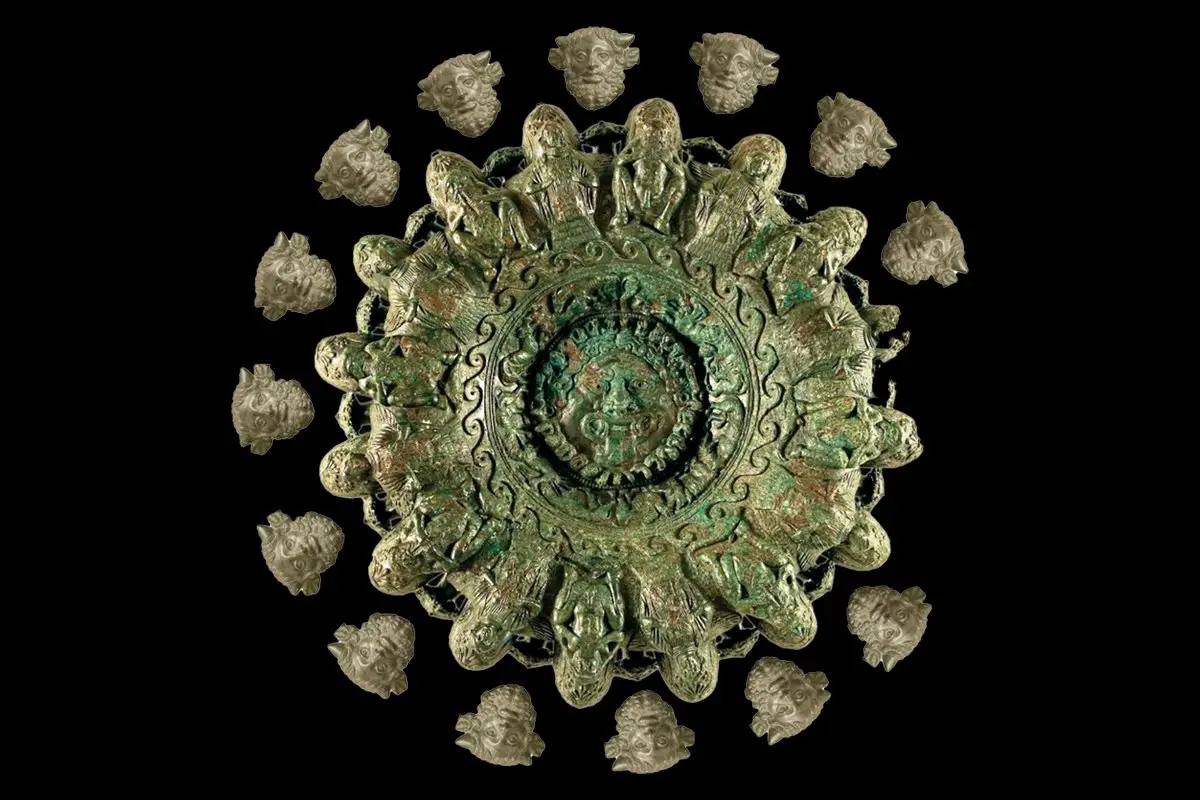A study of a bronze lamp found near the town of Cortona, Italy, has revealed that it was an object associated with the mystery cult of Dionysus.
The lamp, which was discovered in a ditch in 1840, has been the subject of academic debate for decades, and a comprehensive and satisfactory explanation for the lamp has been inconclusive.
It originates from the Etruscan civilisation of Archaic Etruria (present-day Tuscany and parts of Umbria), a culture that flourished between 900 BC and 27 BC in three confederacies of cities: that of Etruria (Tuscany, Latium and Umbria), that of the Po Valley with the eastern Alps, and that of Campania.
The Etruscan civilisation was absorbed into the expanding Roman Republic in the late 4th century BC as a result of the Roman–Etruscan Wars.
Very few examples of similar objects (‘comparanda’) have been discovered in Etruscan or Ancient Greek art, making a comparison to provide context or an interpretation difficult.
Previous studies of the lamp’s decorative motifs have suggested that 16 bull-shaped horned figures depict the Greek river god Achelous. However, according to a new study, published in De Gruyter’s Etruscan and Italic Studies, the lamp originates from around 480 BC and depicts Dionysus, the Ancient Greek god of wine and pleasure, often portrayed with bull features.
This interpretation is based on various literary sources and iconographic evidence, as the cult of Dionysus was strongly associated with satyrs, centaurs, and sileni, and one of the cult’s characteristic symbols was the bull.
Lead author Alburz said: “The lamp was probably an object associated with the mystery cult of Dionysus. Its decoration represents the Dionysian thiasus, perhaps engaged in a cultic performance in the cosmos of the mysteries in celebration of Dionysus.”
Header Image Credit : MAEC webpage, edited by R. Alburz
Sources : Etruscan and Italic Studies | A Re-Evaluation of the Iconography of the Etruscan Bronze Lamp of Cortona







